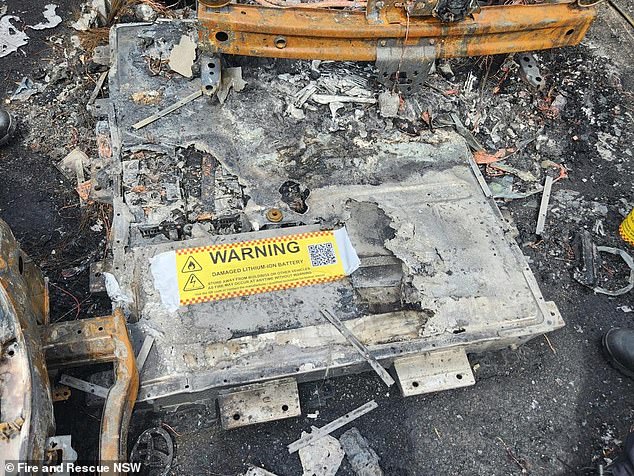Sydney Airport car fire: Five vehicles destroyed after electric car’s lithium ion battery ignites
Sydney Airport car fire: Five vehicles destroyed after electric car’s lithium-ion battery ignited
- Five parked cars burned in airport fire
- An electric battery caused the fire
- READ MORE: Garbage truck fire
Five cars were left as burnt-out wrecks after an inferno broke out in an airport parking lot, sparked by an electric vehicle’s lithium-ion battery catching fire.
NSW Fire Services were called to the Sydney Airport car park at around 8.30pm on Monday to view the devastating scene.
While the lithium-ion battery was detached from the luxury car, it was stored in the parking lot and was identified as the cause of the fire in the Airport Drive Mascot parking lot.
A fire that started in the lithium-ion battery of an electric vehicle has burned out five cars at Sydney Airport
The Aviation Rescue Firefighting Service was also involved in extinguishing the fire.
The fire is being investigated by FRNSW’s Fire Investigation and Research Unit.
FRNSW’s Safety of Alternative and Renewable Energy Technologies (SARET) team is also investigating the cause of the fire.
“These insights will help them continually develop best practices for emergency response to lithium-related fires,” a statement said.
“(It will also) inform the industry on how to manage the risks associated with emerging technologies.”

An investigation has been launched into the fire in the parking lot that broke out on Monday morning

The fire was traced to a battery that had been removed from the vehicle and stored on the property
Lithium battery fires are becoming an increasing problem around the world as millions of electric cars, electric bicycles and e-scooters enter the consumer market.
In Australia alone, 180 lithium battery fires were reported in NSW, 120 in Victoria, 72 in Queensland and 59 in WA last year.
Defective or poor quality batteries can ignite while charging, but they can also catch fire if they are not even connected.
Damage or harsh weather conditions such as direct sunlight or flooding can cause the pressurized electrolyte fluid to leak, which is highly flammable.
